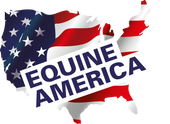Autumn Skin & Coat

As Autumn approaches, those winter coats will start to grow, so let’s talk all things coat and skin!
The skin and coat can act as a useful indicator for what is going on inside the horse’s body and is often one of the first things you learn about horse health - a glossy shiny coat is a sign of good health and vitality, whilst a dull coat could show poorer health.
The skin is the horse’s largest organ and acts as a protective barrier against the outside world, helps regulate body temperature and provides the sense of touch. The skin has three layers:
1. The Epidermis – the outer layer, which provides the protective, barrier layer and contains cells that produce keratin, as well as giving your horse their coat colour.
2. The Dermis – the middle layer, is collagen rich and contains hair follicles, sweat glands, immune cells, blood vessels and nerve endings so crucial for temperature regulation and sensation.
3. The Subcutis – the innermost layer, containing fat and muscles, which gives you that twitch. This layer also provides insulation and shock absorption.
Problems of the skin and coat are usually very obvious as they are visible on the surface, but the causes can be wide ranging, for example, Cushing’s Disease causing delayed shedding, Lice causing itching and bald patches, allergies causing hives, fungal diseases such as ringworm causing bald patches, or rain scald or mud fever causing scabs. As always, if you have any concerns about your horse’s health please consult your Vet for advice.
Two key areas to focus on as an owner to keep your horse’s skin and coat healthy:
1. Grooming
Regular grooming is not only relaxing (for both you and your horse!) and helps to strengthen your bond but it also has health benefits. A good brush will stimulate blood flow to promote circulation, help to redistribute natural oils, removing old coat, dirt and sweat that can cause irritation. It is also a good opportunity to perform a health check and detect any injuries or skin problems early. One word of caution, bathing is great for getting that whiter than white coat or helping that shine, but be careful not to overdo it, as you could be unintentionally weakening the horse’s natural defences.
2. Nutrition
Another cause for a dull coat, can be as simple as they are not getting the right nutrients in their diet, this includes protein, oil (especially omega 3 fatty acids), vitamins and minerals. We will delve into this detail more in a future blog!
Ensuring your diet is balanced and your horse is receiving their essential vitamins and minerals daily to support their coat and skin from the inside out. Targeted nutrition from skin and coat supplement can provide additional nutrients to keep the coat and skin healthy and glossy.
With seasonal changes in forage and management, now is the perfect time to reassess your horses diet plan - if you need help please just get in touch via our Nutrition Helpline to speak to our friendly Vets and Nutritionists.

